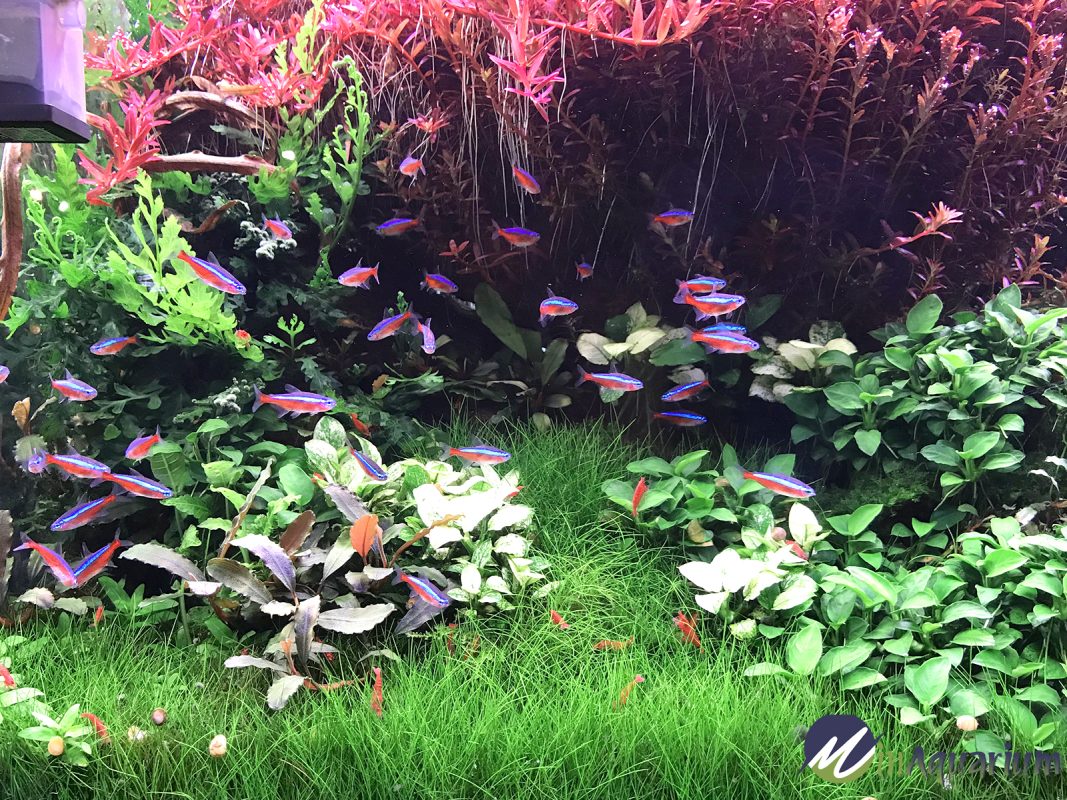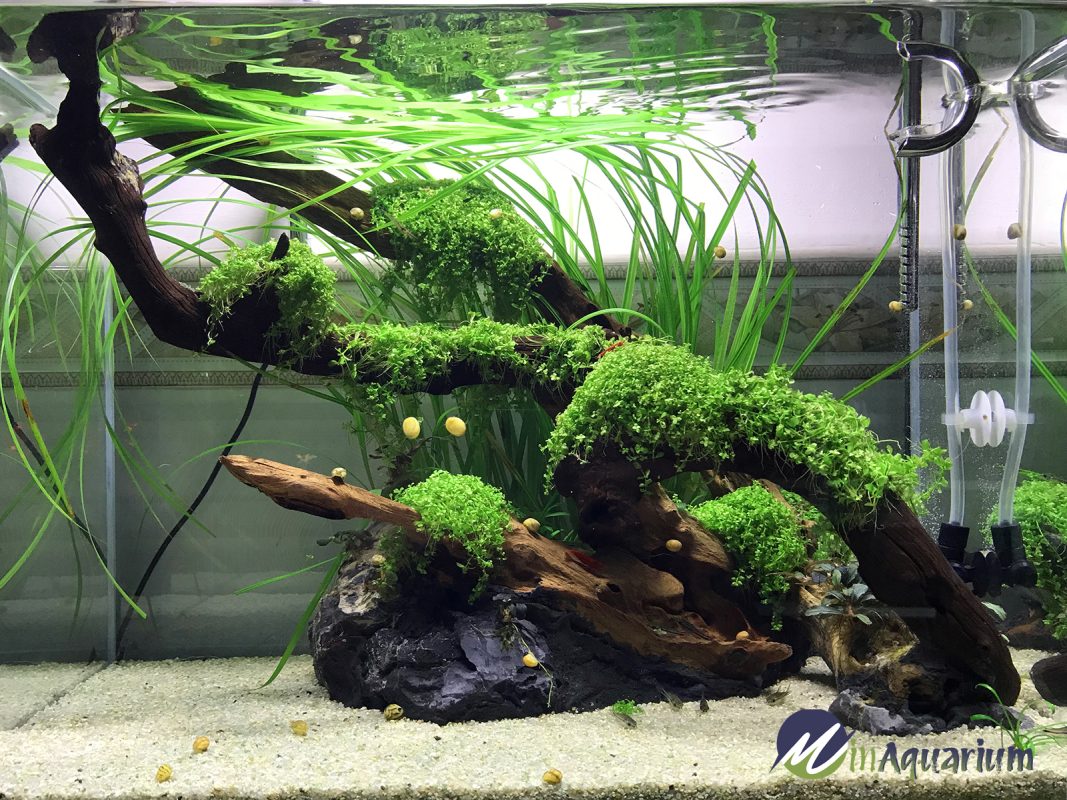Blogs
Live Aquarium Plants | Enhance Your Underwater World with Natural Beauty
Live aquarium plants are far more than just visual enhancements; they are essential components of a thriving aquatic ecosystem. By mimicking the natural environment of your fish, live plants provide numerous benefits, including improved water quality, reduced algae growth, and enhanced habitat for your underwater companions. In this comprehensive guide, we will delve into the world of live aquarium plants, exploring their diverse benefits, various types, care tips, and everything you need to know to create a flourishing underwater paradise.
Embark on this journey to transform your aquarium from a static display into a vibrant and dynamic ecosystem teeming with life and natural beauty. Let us empower you to make informed decisions and cultivate a thriving underwater environment where your fish can thrive.
Benefits of Live Aquarium Plants
1. Improved Water Quality
- Live plants naturally filter water, removing harmful toxins and pollutants.
- They provide oxygenation, boosting the dissolved oxygen levels vital for fish respiration.
- Their root systems aid in the breakdown of organic waste, contributing to cleaner water.
2. Reduced Algae Growth
- Plants compete with algae for nutrients, limiting its growth and preventing unsightly algae blooms.
- They provide shade, reducing areas where algae thrive.
- Some plant species release chemicals that inhibit algae growth.
3. Enhanced Biological Filtration
- Live plants provide a surface area for beneficial bacteria to colonize, aiding in the biological filtration process.
- They create a micro-environment conducive to the growth of beneficial bacteria.
- This natural filtration system helps maintain a healthy balance in the aquarium ecosystem.
4. Improved Fish Health and Behavior
- Live plants provide shelter and hiding spots for fish, reducing stress and promoting natural behaviors.
- They offer a more stimulating and enriching environment, encouraging exploration and activity.
- Some plants release calming chemicals that can improve fish well-being.
5. Aesthetic Appeal and Natural Beauty
- Live plants add lush greenery and vibrancy to the aquarium, creating a visually appealing environment.
- They can be used to create unique aquascapes and natural-looking habitats.
- The variety of colors, textures, and shapes of live plants provides endless design possibilities.

Types of Live Aquarium Plants
1. Beginner-Friendly Plants
- Java Fern: Adaptable and low-maintenance, thrives in various light conditions.
- Hornwort: Fast-growing and effective at removing nitrates, ideal for beginner tanks.
- Amazon Sword: Hardy and visually appealing, adds a touch of elegance to aquariums.
2. Intermediate Plants
- Anubias Nana: Compact and versatile, suitable for various tank positions.
- Ludwigia Repens: Vibrant red color, adds a splash of color to the aquascape.
- Water Wisteria: Fast-growing and adaptable, suitable for mid-ground placement.
3. Advanced Plants
- Rotala Wallichii: Stunning red coloration, requires high light and CO2 supplementation.
- Bucephalandra sp.: Unique and diverse, ideal for creating eye-catching focal points.
- Monte Carlo: Dense and carpeting, perfect for creating a lush foreground.
Choosing the Right Plants for Your Aquarium
1. Consider Your Fish Species
- Research the specific plant requirements of the fish you intend to keep.
- Choose plants that are compatible with the water parameters and behavior of your fish.
- Avoid plants that are toxic or might harm your fish.
2. Determine Lighting Conditions
- Assess the amount and duration of light available in your aquarium.
- Different plants require varying light levels for optimal growth.
- Choose plants that are suitable for the specific lighting conditions in your tank.
3. Tank Size and Placement
- Consider the size of your aquarium and the space available for plant growth.
- Choose plants that are appropriately sized for your tank and intended placement.
- Group plants according to their height and growth patterns to create a balanced aquascape.
Care and Maintenance of Live Aquarium Plants
1. Regular Trimming and Pruning
- Regularly trim and prune plants to maintain their desired shape and size.
- Remove dead or decaying leaves to prevent the release of harmful compounds into the water.
- Pruning encourages bushier growth and promotes plant health.
2. Nutrient Supplementation
- Some plants may require additional nutrients for optimal growth.
- Use specialized plant fertilizers or root tabs to provide essential nutrients.
- Monitor plant growth and adjust fertilization accordingly.
3. CO2 Supplementation for Demanding Plants
- Certain plants, such as Rotala species, benefit from CO2 supplementation.
- A CO2 system can enhance plant growth, vibrancy, and coloration.
- Research the specific needs of your plants before adding CO2 to your aquarium.
4. Algae Control and Prevention
- Monitor for algae growth and take preventative measures.
- Maintain a clean aquarium environment by removing uneaten food and decaying organic matter.
- Use algae-eating fish or invertebrates to help control algae populations.
5. Pest and Disease Control
- Regularly inspect your plants for pests and diseases.
- Quarantine new plants before adding them to your main aquarium.
- Treat any infestations promptly to prevent the spread of disease.
Troubleshooting Common Issues with Live Aquarium Plants
1. Melting or Browning of Leaves
- Check water parameters, such as pH, ammonia, and nitrite levels.
- Ensure adequate lighting and nutrient availability.
- Acclimate new plants gradually to avoid shock.
2. Algae Overgrowth
- Reduce light intensity or duration.
- Increase water changes and improve filtration.
- Introduce algae-eating fish or invertebrates.
3. Nutrient Deficiencies
- Identify the specific nutrient deficiency based on plant symptoms.
- Supplement with specialized plant fertilizers or root tabs.
- Monitor plant growth and adjust fertilization accordingly.
FAQs
1. How often should I trim my live aquarium plants?
- The frequency of trimming depends on the growth rate of the specific plant species.
- Fast-growing plants may require trimming every few weeks, while slower-growing plants can be trimmed less frequently.
- Regularly monitor plant growth and trim as needed to maintain their desired shape and size.
2. Do I need CO2 for live aquarium plants?
- CO2 supplementation is not essential for all live aquarium plants.
- Some plants, particularly those with rapid growth rates or high light requirements, benefit from CO2 supplementation.
- Research the specific needs of your plants and add CO2 only if necessary.
3. How can I prevent algae growth in my live plant aquarium?
- Maintain a clean aquarium environment by regularly removing uneaten food and decaying organic matter.
- Control lighting intensity and duration, as excessive light can promote algae growth.
- Introduce algae-eating fish or invertebrates to help control algae populations.
4. What are some good beginner-friendly live aquarium plants?
- Java Fern, Hornwort, Amazon Sword, Anubias Nana, and Water Wisteria are all excellent beginner-friendly plants.
- They are hardy, adaptable, and require minimal care, making them ideal for novice aquarists.
5. Where can I buy live aquarium plants?
- Live aquarium plants are available at pet stores, specialized aquarium shops, and online retailers.
- Choose reputable sources to ensure you are getting healthy and disease-free plants.
Conclusion
Integrating live aquarium plants into your aquatic environment offers a plethora of benefits, transforming it into a thriving ecosystem that not only enhances the visual appeal but also promotes the health and well-being of your fish. This comprehensive guide has provided you with the knowledge and insights to embark on this transformative journey.
By understanding the various types of live aquarium plants, their specific needs, and proper care practices, you can create a flourishing underwater paradise that reflects your personal creativity and provides a harmonious environment for your aquatic companions. Remember, ongoing observation, research, and adjustments are key to maintaining a healthy and balanced ecosystem. Embrace the ever-evolving nature of your aquarium and enjoy the continuous learning and discovery that comes with cultivating a thriving underwater world.

